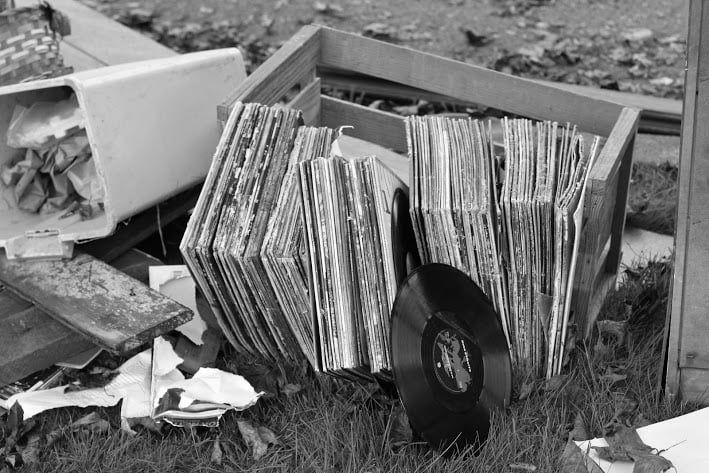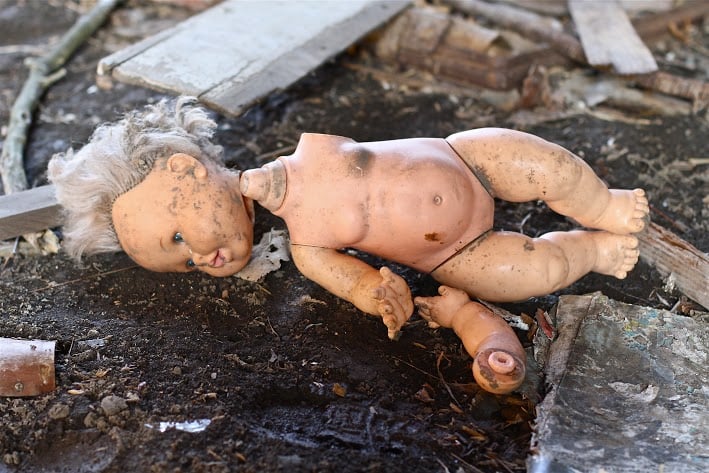
The Afterlife of Discarded Objects: Memory and Forgetting in a Culture of Waste is a digital archive project from which a book is growing, run by Andrei Guruianu and Natalia Andrievskikh.
It all began with Andrei and Natalia sharing their own memories in post-communist Russia and Romania of playing with the rubbish left over after the shutdown of Soviet factories in the 1990s and the influx of Western goods from abroad. This evolved into curiosity about the role of objects in our lives, and The Afterlife of Discarded Objects is an ‘attempt to explain and ultimately redeem human fascination with discarded material objects as a means to encapsulate and shape the socio-cultural imagination.’
Contained in objects and the narratives that people tell about them are ‘personal and collective histories’ and through the website they have now have collected stories from contributors around the world. Presented are the works of numerous visual artists who create pieces of art primarily with found objects, in an integration of word and image, individual and community, past and present.
The association with and role of objects in our lives has been universal and timeless. Of course historical progress changes things, cultural context influences, but ‘across the world people have always endowed objects with symbolic meaning beyond their immediate intended function.’ This might be a lucky charm, favourite ornament, or familiar painting—all offer ‘valuable insights into how we conceive of our relationships with materiality.’

As Andrei explains, the idea is that by ‘looking into the similarities and differences of how objects come to mean something to various peoples we hope to have a better understanding of how our relationships to objects shape who are, both individually and collectively.’ In a culture of disposability and waste, it’s clear that there will be some changes in just what that relationship is, and how it impacts upon interactions with and perceptions of the world.
Whilst there will be a nod to recycling, helping the environment, and conscious consumerism, culture plays a real difference again. Reconsidering how to use an object in some places is a lifestyle choice and trendy option—think of ‘upcycling’ and ‘vintage chic’—but in developing countries, the term recycling itself might mean something entirely different, closer to repurposing and reusing as necessity. So whilst the duo acknowledge that this is one aspect, for them being ‘green’ isn’t really the aim.
Instead, it comes from the one constant that has been found—that of evoking memories. ‘Regardless of country, culture, or time period, objects are connected to memories. In fact, one could go out on a limb and say that most, if not all, of our memories involve some kind of relationship to things (objects as repositories of memory).’

This project has also clearly been approached from a very academic place. And there’s also a therapeutic aspect to reconsidering the objects that surround us. But neither environmental concerns, therapy, or academia need to be the position from which people get involved. The website serves primarily as a living digital archive of stories and works of art from anyone who wishes to share their own relationships with material objects. And this is what they invite people to do.
‘These can be stories as you suggest from people who simply have a lot of stuff around the house that they love hanging on to (or don’t love it so much but can’t let go), people who have distinct memories tied to a particular object from their childhood (or adulthood), maybe even recollections of playing with “garbage” as little kids, and in the case of artists works of art that specifically engage with discarded items as their primary method of expression.’
The overall aim is to establish a site and archive that offers a ‘venue for narratives and voices on a topic that almost all of us have something to say about, and which—regardless of location or background—can provide us with a sense of community and shared experience.’
It’s a coming together and connection. And it all starts with a simple object and a simple story.
Filed under: Art & Photography, Written & Spoken Word

Comments